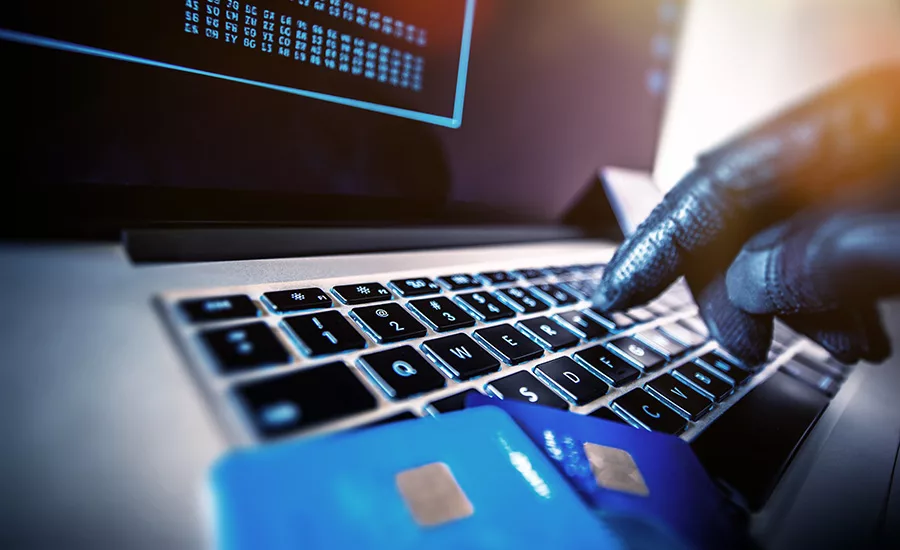Keeping Up with the Criminals through Fraud Detection

With the growing number of data breaches exposing personally identifiable information, businesses managing sensitive data should assume consumer information is available to fraudsters aiming to open or access accounts. Each new data breach has the potential to afford fraudsters the stolen personally identifiable information of your current or potential customers, allowing them to open new accounts or access existing ones. Fraudsters may have access to your current or potential customers’ addresses, Social Security numbers and date of births, or their usernames and passwords.
Fraudsters’ methods continually evolve to counter new fraud protection measures and with personally identifiable information, they could steal a customer’s identity or create a synthetic identity. Once a fraudster captures this information, if they are able to access a customer account or open an account, it creates a nightmare scenario with significant repercussions for the business and the customer.
To decrease fraud, businesses must implement identity authentication measures that reinforce weak points in the account opening and access process. Security professionals know one-step password logins are no longer enough to protect accounts. However a recent Forrester survey of security and risk professionals found that while 49 percent of the respondents felt passwords are not a sufficient authentication method, only seven percent planned to move away from passwords in the next 12 months.
The following points are critical steps for businesses to take to identify customers before they open or access accounts.
Implement Multi-step Frictionless Authentication Tools
Advance predictive modeling tools can detect potentially fraudulent identities early in the application process and determine whether an account applicant requires additional verification. For example, a predictive model could connect a Social Security number with an address or phone number to help authenticate the applicant’s legitimate identity.
To be most effective, predictive models should draw upon as many unique data points as possible, including verifying and linking personally identifiable information (name, address and date of birth) to ensure all of the information is correct and that it matches a real identity. Companies should mine information from their internal database in combination with outside data to validate a potential customer’s identity.
In addition to this foundation of personally identifiable information, predictive models should also incorporate attributes such as the method of access, time of application and speed of the transaction. The best authentication models analyze the available data and note any suspicious behavior outside of the norm for the claimed applicant. If the model correctly corroborates the applicant’s information, it will mark the applicant as a low risk, and they will continue the application process without additional disrupting security steps.
Predictive modeling using proprietary algorithms supplement anti-fraud methods to improve fraud detection and decrease false positives. The security industry has made great strides on this front in recent years, and it is likely to continue rapidly improving.
Use Consortiums to Take Advantage of Big Data and Analytics
Companies can strengthen their predictive models by obtaining data from other industry sources to flag behavior patterns and connections that fall outside of the norm and indicate the likelihood of fraud. We know fraudsters often use the same fraudulent identity with different companies. Fraud consortiums, or the sharing fraud-detection information with a network of similar companies, strengthen prevention measures by helping to detect these repeat, professional fraudsters.
Advances in technology are increasingly showing how valuable this sort of data sharing can be in fraud prevention measures. As a result, numerous industries are now using consortiums to alert peers about fraudulent activity in real time.
Stay Ahead of Fraud Detection Trends
Fraudsters are always working to find opportunities to exploit new technology. As a result, businesses must ensure they are current with their fraud detection methods. Core to the effectiveness of a business’s fraud prevention is the fraud detection team it has in place. The best fraud detection teams are comprised of curious people who enjoy studying data and finding patterns. Criminals are resourceful. To keep up, fraud prevention teams needs to be creative, consistently fine-tuning your business’s predictive modeling to account for fraudsters’ methods, adding innovative frictionless authentication methods, and keeping abreast of the latest industry standards and trends in fraud detection.
Looking for a reprint of this article?
From high-res PDFs to custom plaques, order your copy today!






